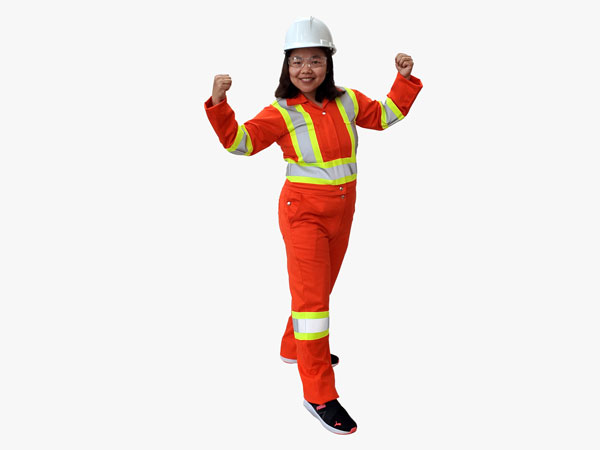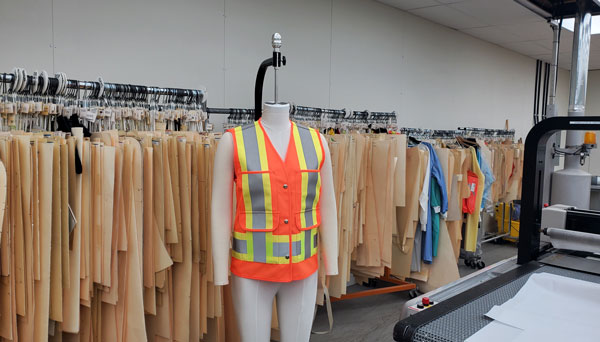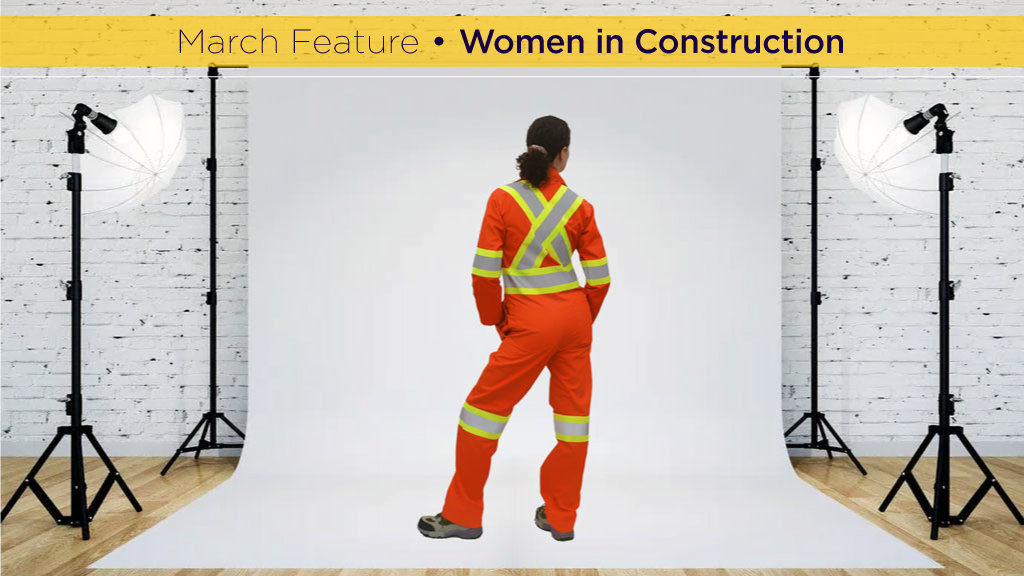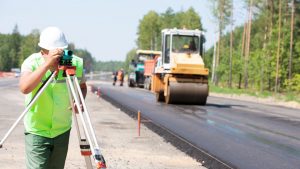No more boxy pants, droopy elephant rears, turtle-shell jackets and hand-devouring sleeves.
for safety clothing and survival gear, is launching a dedicated line of women’s high visibility safety clothing April 1 with the design fitted to a woman’s body, said company president Dee Miller, who has been in the safety and construction industry for over three decades.
Miller, a past chairperson of the Canadian Construction Association, said the need for a dedicated line of personal protection clothing for women acknowledges the growing presence of women in the industry and their inability to work effectively in ill-fitting clothing.
“There has been a void in the market and we have the manufacturing facilities,” she said, as F.A.S.T comes off producing three million medical gowns during COVID. It also has legacy, as the company has been producing a men’s line.
But, downsizing men’s patterns wouldn’t work as women’s bodies are different.
“We realized that we had to start over from scratch,” said Miller.

F.A.S.T. hired two pattern makers from the women’s fashion industry and began work on the new line of (CSA) clothing that was tailored to the shape of Canadian women.
The launch line features a highway roadwork vest, surveyor’s vest, one piece coveralls and a two piece coverall with a bomber-style jacket. The two-piece coverall provides women easier access for washroom breaks.
Hoodies are also being added.
“We are going to add a parka and our website will have a new arrivals category,” she said, adding companies can place orders or individuals can do online shopping as a sizing chart for women has been added.
She said F.A.S.T. continues tweaking designs “adding a pocket here or there” to make the items more serviceable.
The need for better fitting clothing is outlined in CSA’s 2022 report Canadian Women’s Experiences with Personal Protective Equipment, where survey results found the three most common problems were improper fit (50 per cent of those surveyed), PPE was uncomfortable (43 per cent) and selection was inadequate (35 per cent).

The survey results found more than half the time, women wore the wrong size, or didn’t wear the PPE (28 per cent of the time) or did a work-around fix (38 per cent) using rubber bands, safety pins, and/or duct tape to shorten clothing items.
“Nearly 40 per cent reported experiencing an injury or incident that they perceived to be related to their PPE,” the report said.
Miller said her company bids on (WSBC) clothing contracts and noted this year’s contract specified dedicated high-visibility clothing items for women, criteria that F.A.S.T. successfully met and became the preferred proponent.
Ashley Gregerson, WSBC adviser in government and media relations, said via email that WSBC in 2022 issued guidelines requiring proper fit of PPE and that downsized men’s items may not always fit women. The issue of better fitting women’s clothing is going further.
“WorkSafeBC’s policy regulation and research department will be recommending that WorkSafeBC’s board of directors add this issue to the 2024-2026 regulatory work plan,” she said.
In Ontario, the move was made a year ago when former minister of labour, immigration, training and skills development Monte McNaughton announced the days of “shrink it and pink it” were over for women’s PPE and moves would be made to change regulations to ensure proper fit.
“It has been years coming,” said Pat Farberman, co-owner with husband Frank, of two Alberta retail outlets that provide women’s workplace clothing to those doing highway and roadwork, oil and gas work, construction and welding.
She has been offering women’s dedicated clothing and PPE for 15 years and believes her store in Edmonton is the only one of its kind in Canada. A second store Direct Workwear in Fort McMurray offers a women’s selection of clothing.
Farberman said the women’s retail outlets are reflecting the growth of women in Alberta industries today.
“A woman can’t do her job if she is wearing men’s clothing with the crotch down to her knees and she is uncomfortable,” she said.
She explained in the past the higher cost of women’s PPE (because of limited volume) was called the “pink tax,” but points to today’s growing concern on safety and higher insurance premiums.
“We have tried to keep our costs in line with the men’s,” she said as she has sourced a number of suppliers.
Her stores distribute across Canada and offer clothing in a variety of colours, with some industries using colour to identify their employees on a site that may have multiple trades.






Recent Comments
comments for this post are closed